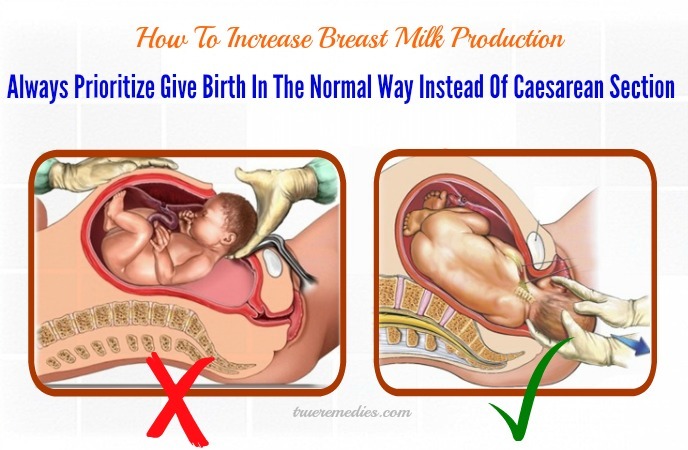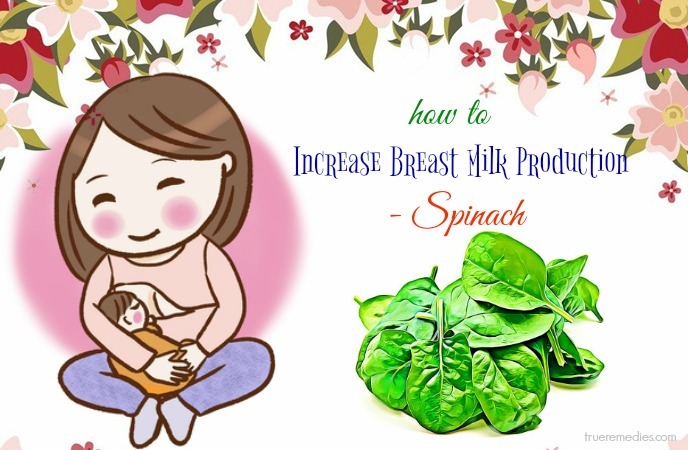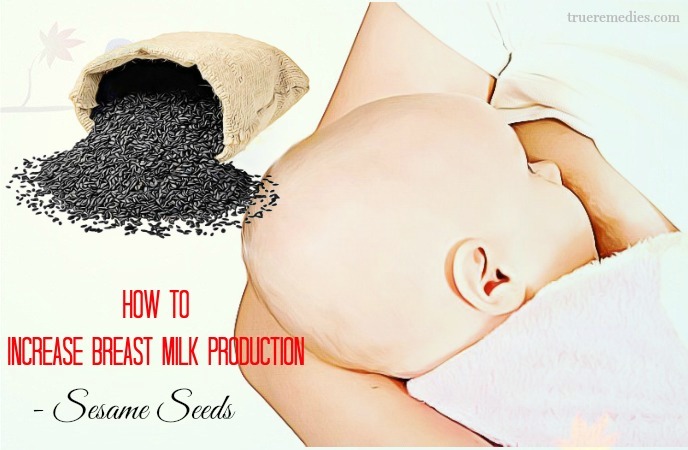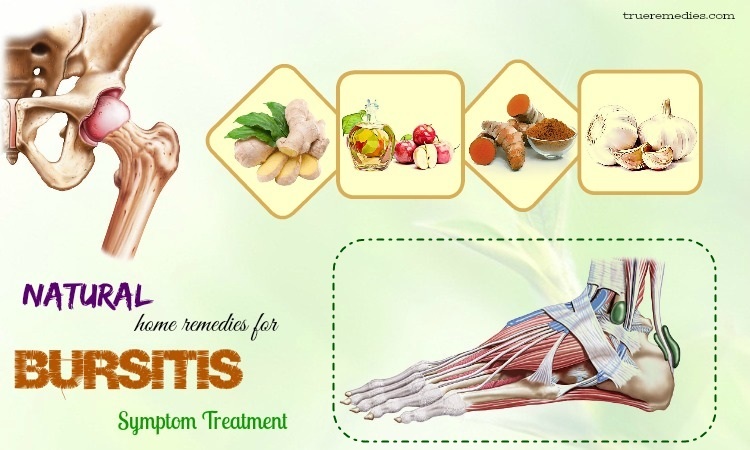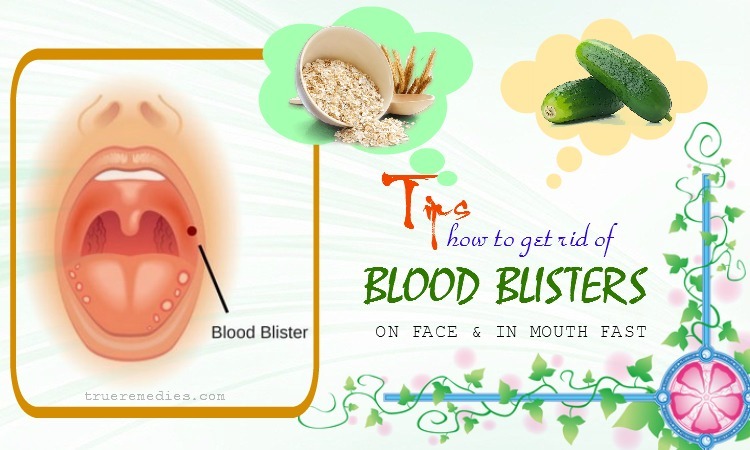updated: 11/09/2019
Contents
- What Is Breast Milk Production?
- Causes Of Reducing Breast Milk Production
- Symptoms Of Reducing Breast Milk Production
- Who Is At High Risk?
- When To See A Doctor?
- How To Increase Breast Milk Production
- 1. Prioritize Give Birth In The Normal Way
- 2. Breastfeed As Much As Possible
- 3. Avoid Using Feeding Bottles
- 4. Cuddle And Stay With Your Baby
Many young moms wonder about natural and effective ways on how to increase breast milk production at some points in their breast pumping or breastfeeding journey. You ask yourselves questions like “am I having enough milk?” or “what should I do to increase my breast milk supply while breastfeeding?” Luckily, there are a few useful tips on how to help maintain and increase milk production. But first, let’s take a look at the basics of reducing milk production to determine exactly what your condition is. Based on that, you can find the right tips for you.
- 38 home remedies for blocked milk duct treatment
- 36 effective home remedies for lactose intolerance pain & attack
What Is Breast Milk Production?
Usually, a woman starts to produce more breast milk about 24 to 48 hours after childbirth. Breast milk is considered to be the most important source of nutrition for babies before they can digest other foods. Breast milk is the complete food of nature, providing your child with the best start in life. This kind of milk contains all the nutrients such as protein, carbohydrates, vitamins, minerals, and micronutrients your child needs to grow healthy. This is why the World Health Organization (WHO) recommends exclusive breastfeeding for at least the first 6 months[1]. Interestingly, breast milk is not only good for babies but also good for mothers.
The process of producing breast milk is automatically started as soon as you push the placenta out. As soon as your baby is born, your body will change hormones quickly so that you can feed your baby from the outside. The concentration of estrogen and progesterone hormones will decline significantly as soon as you give birth, and the density of the hormone prolactin (one of the hormones responsible for breastfeeding) will increase drastically and activate the milk-producing cells in your breast.
However, the increase in hormones is not the only factor to create breast milk. The help from the baby’s mouth is the key factor for milk production. When the baby sucks breast milk, the level of prolactin will increase and promote breast milk production.
The level of breast milk exactly matches the baby’s needs throughout the developmental process. The first drops of breast milk are called colostrum (the first 4-5 days after childbirth) with ingredients other than transitional milk or mature milk (from day 5 to about 2 weeks after birth). However, the production of breast milk is reduced for some reason. This is something that many mothers care about.
TrueRemedies Partner Solutions

Need a Help from the Leading Expert Online, Available 24/7?
They’re all here and ready to answer your questions online or by phone. Keep asking questions until you get the answer you need.
What Are Common Causes Of Reducing Breast Milk Production?
Here are common causes of this problem:
- Fatigue And Depression
This is a common problem for most mothers during pregnancy and after giving birth. After going through pregnancy, giving birth takes a lot of blood and power from the mother. In addition, hormonal changes occur in their bodies. This causes their bodies to be exhausted. But the process of raising children does not give them much time to rest.
For first-time adopters, they have a lot of pressure because they have no experience in raising children. They do not know how to change a diaper or how to breastfeed properly, etc. These things make them feel physical and mental fatigue. This causes some women to develop depression after giving birth, and the activity of the milk glands weakens.
- Undernutrition
After birth, many mothers try to go on a diet to regain the body as beautiful as before. This causes their bodies to not have enough nutrients to improve their health and produce milk to feed their babies. If this condition persists, it may cause the body not to produce breast milk.
- The Lack Of Experience
For first-time adopters, the lack of parenting experience is unavoidable. Not knowing how to breastfeed properly, not breastfeeding regularly, and enough times a day will not stimulate the reflection of the mother’s milk production.
- Cesarean
Women who have a cesarean may have trouble breastfeeding immediately. After 1-2 days of cesarean section, the mother’s body begins to produce milk. In addition, in some women, antibiotics may make their bodies unable to produce breast milk.
- Birth Control Pills
Birth control pills contain estrogen – a hormone that interferes with breastfeeding. Therefore, you should not take birth control pills that have estrogen while breastfeeding. Let’s try other contraceptives, although there are some birth control pills that have progesterone only
- Calcium Deficiency
Lack of calcium is a big reason why your body cannot produce much breast milk. When your body is not getting enough calcium, you may not be able to produce enough milk to feed your baby because the main ingredient in your breast milk is calcium.
- Mastitis
Mastitis is a condition in which breast milk is blocked in the breast ducts and cannot drain. Typically, this condition occurs when you are infrequently nursing. However, if you have mastitis due to infection, you need to stop breastfeeding immediately.
- You Are Pregnant Again
When you are pregnant again while breastfeeding, your hormonal balance is disturbed. This can cause your milk supply to dry out quickly.
What Are Common Symptoms Of Reducing Breast Milk Production?
Here are common symptoms of this problem:
- You can only produce a little milk or cannot produce milk.
- The color of breast milk is opaque.
- The breasts are small and too soft. You do not feel they are full.
- Your body is tired, and you do not want to eat anything.
- Slow digestion
- Frequent breathing difficulty
- You always feel frustrated and tense spirit.
- Non-solid fertilizers
- Sometimes, you may have a fever.
- Your baby gains less weight. In the first 6 months, children increase less than 500g/month or 125g/week.
- Your baby pees less (less than 6 times a day), his/her urine is yellowish, and the smell of urine is very uncomfortable.
- He/she often cries. Each baby’s breastfeeding is often too short or too long.
You may experience other symptoms not mentioned. If you have any questions about the signs of the disease, please consult your doctor.
Who Is At High Risk Of This Problem?
Postpartum women may experience reducing breast milk production; however, women who frequently suffer from stress and have undernutrition diets are at high risk of this problem. You can control this disease by minimizing risk factors. Please see your doctor for more information.
When To See A Doctor?
If you have any of these signs or symptoms or have any questions, please consult your doctor. Each person’s condition is different, so please consult your doctor to select the most suitable option. In addition, if your condition is not improved after a period of self-treatment, you also need to see a doctor to find the treatment needed for you. This is important because it greatly affects your child’s development.
Above is the basic information you need to know about breastfeeding and breast milk production. As you can see, breast milk is a great source of nutrients that moms want to give to their babies. Therefore, the reduction in breast milk production is undesirable. Below, we introduce you tips to help you quickly resolve this situation. It is time to find out tips on how to increase breast milk production fast after delivery. Take a close look at TrueRemedies.com!
Top 27 Tips On How To Increase Breast Milk Production Fast After Delivery
1. Always Prioritize Give Birth In The Normal Way Instead Of Caesarean Section
This is the first treatment in this list of tips on how to increase breast milk production quickly. Natural childbirth is a good start to breastfeeding[2], but this does not mean that if you have a cesarean, you cannot breastfeed. But as we said above, t?[3]. This makes some mothers worry that they cannot get breastfeeding soon.
However, whether you have a normal birth or have a cesarean, you should feed your baby in the first hour after birth, so that he/she can receive valuable colostrum. This is a very nutritious milk source. Colostrum is a very complex mixture of vitamins, minerals, immune factors, and important growth factors that help to protect your babies from the risk of diseases[4]. In addition, colostrum helps your babies develop in a healthy way. Your body can only produce it within the first 72 hours after birth. So, give it your baby as soon as possible after birth.
If you have a cesarean section, you should breastfeed immediately after the first hour after birth. However, depending on the condition of the mother, the body’s ability to produce milk after the cesarean section will be different. This condition should not last for more than 4-6 hours. Many studies show that if you prolong this time, your baby will have many problems with breastfeeding and you may get blocked milk problem[5]. If your body cannot produce enough breast milk, do not worry too much. Feed your baby as much as possible. In the early days, the baby can suck very well because that is the instinct of human.
2. Breastfeed As Much As Possible
Among tips on how to increase breast milk production fast after delivery, this is one of the most effective. Generally, breast milk is produced on the principle of supply and demand. The more frequent breastfeeding is, the more milk is produced[6]. Therefore, you should breastfeed regularly without having to follow any given timetable. Once your baby is in need, you should feed him/her immediately.
Active breastfeeding will help you stabilize your milk supply and stimulate milk production. If your body produces more breast milk than your baby needs, you can milk and store the milk in a freezer. The use of a breast pump is also a good way to protect your body’s ability to produce breast milk.
It should be noted that improper use of the breast pump may affect your body. Many people mistakenly think that they should use a breast pump soon after each breastfeeding to stimulate more milk production. However, according to many nutritionists, if you maintain this habit in the first weeks after birth, the natural balance between the amounts of milk you produce and the amount of milk your baby needs will be broken. Even so, this condition may lead to chest tightening or breast abscesses due to too much milk.
3. Limit The Use Of Feeding Bottles (Baby Bottles)
Limiting the use of feeding bottles is one of the little-known tips on how to increase breast milk production after delivery. You may not know that babies use different tongue and jaw movements between breastfeeding and sucking feeding bottles. When your baby is just getting used to breastfeeding, if you teach your baby how to feed baby bottles early, breastfeeding is inevitably affected in the wrong direction.
Therefore, you should limit your baby to feeding with baby bottles, even if the milk you give your baby is breast milk. This can cause your baby not to want to breastfeed anymore.
Many women have uneven breast milk mechanisms, which means that at times their bodies produce a lot of milk, but at other times, their bodies produce very little milk. Therefore, every time the body produces more milk, they will milk and store the milk in the freezer. This leads to the baby being fed with baby bottles. When faced with this situation, the stimulation of the body’s milk production by using the specialized machine regularly from 8-10 times a day will improve your condition. If you use this machine properly, you can ensure your body produces enough breast milk for your baby every day.
4. Always Cuddle And Stay With Your Baby
This is another must-try treatment in this list of tips on how to increase breast milk production quickly. Numerous scientific studies have shown a significant relationship between parental care behavior and breast milk production. Accordingly, actions such as caressing and cuddling baby will increase the levels of oxytocin and prolactin in the mother[7]. Both of these hormones are essential for breast milk production.
Breastfeeding mothers have higher levels of oxytocin and prolactin in the blood, promoting emotional attachment between the mother and baby, and stimulating lactation. Interestingly, only by taking a baby massage and carrying a baby in front of the breast can help mothers feel enhanced emotional communication with their baby. Sleeping with the baby is also convenient to allow the mother to breastfeed regularly at night.
5. Lose Weight Gradually
The next treatment in this list of tips on how to increase breast milk production fast is losing weight gradually. There is nothing wrong with losing weight gradually during breastfeeding. This is the desire of most women to avoid overweight. Mothers who are breastfeeding lose weight better than those who do not breastfeed. But you should not diet during breastfeeding. Losing weight too fast may lead to the release of harmful substances in your body fat into the breast milk.
Although you want to lose weight, you still need to consume at least 1,800 calories and 6 cups of liquid per day during breastfeeding. If you are on a diet, this may reduce the amount of milk your body produces. You may not know that the things you eat have a great impact on the quality and quantity of breast milk.
6. Hot Milk
This sounds strange when it comes to tips on how to increase breast milk production quickly, but it works. After birth, a cup of hot milk is really necessary because it helps you quickly recover. In particular, drinking hot milk at this time helps the mother’s body to quickly produce breast milk. During breastfeeding, pregnant women should regularly drink hot milk. It is very beneficial for improving their health and recovery.
7. Beef
This is the next one in this list of tips on how to increase breast milk production after delivery. Fresh lean beef is rich in various vitamins and minerals, especially iron and zinc, and it is recommended as part of a diet of pregnant women[8]. The women lost a lot of blood during childbirth. It also means that your body’s iron reserves will be depleted, causing you to become permanently fatigued, tired, and dizzy. Therefore, after giving birth, you should eat more beef to supplement iron for the body. In addition, when breastfeeding, you need to eat foods that are rich in protein and vitamin B12. Beef is the best source of these two nutrients.
8. Green Papaya
When pregnant, you should always be advised not to eat green papaya because it may cause uterine contractions leading to miscarriage[9]. However, this is a good food for women after childbirth. It helps to promote the production of breast milk of your body[10] [11].
Green papaya contains many vitamins, fats, and a high content of protein. You can stew the pig’s feet with green papaya. This food is known to enhance the production of breast milk very well. Unripe papayas are a usual part of South Asian cuisines. It is a natural sedative, helping you to feed and relax the baby better. You could take advantage of unripe papayas as a salad or toss it with the flat noodles.
If you do not want to eat the pig’s feet, you can stew green papaya with carp fish to get the same results. These foods also help you reduce the amount of fat stored in your abdomen. This is good news for many women.
9. Seaweed
Seaweed is a nutritious food that pregnant women and breastfeeding women are encouraged to boost their intake. Seaweed is rich in nutrients; it contains 40% of protein and full of 8 kinds of essential amino acids for the body. In addition to high protein content, seaweed also contains a lot of minerals, vitamins, micronutrients, and fiber[12].
The vitamin A content in seaweed is 2-3 times higher than that of carrots and 10 times more in butter, the calcium is 3 times higher than cow’s milk, the iron is 9 times higher than pork, and the fiber is 16 times higher than cabbage. In summary, seaweed contains many good nutrients in the blood circulation, excretion, and the production of breast milk[13]. You can use seaweed to make a lot of delicious dishes, such as seaweed soup, rice rolls, or salad.
10. Katuk Leaves
Among tips on how to increase breast milk production quickly, eating katuk leaves is one of the most effective. Many people already know about the katuk leaves soup. This is a well-known Asian food for postpartum women[14]. It helps stimulate the production of breast milk. Katuk leaves contain a variety of vitamins A, C, and calcium to help to increase their lactation, contract the uterus quickly, and reduce the risk of uterine inflammation. Katuk leaves soup is a very delicious and benign dish, so you do not have to worry about allergies if you eat it. Therefore, let’s add this nutritious food regularly to your diet.
11. Brown Rice
Eating brown rice is one of the little-known tips on how to increase breast milk production quickly. Brown rice is a nutritious cereal because it contains many minerals and trace elements that help detoxify the body, eliminate toxins under the skin, help postpartum women lose weight safely, and produce more breast milk. According to Medical News Today, you should eat 8 ounces of brown rice a day if you are exclusively breastfeeding[15]. You can drink brown rice milk or use this kind of rice for some dishes.
12. Spinach
This is another must-try treatment in this list of tips on how to increase breast milk production quickly is eating spinach. This is a popular vegetable in Asia. Spinach contains vitamins A3, B3, saponin, and iron, so it is good for postpartum women. Iron and folic acid/folate are two micronutrients that are essential for everyone, especially postpartum women.
Folic acid is also one of the important B vitamins for postpartum women. Spinach is a rich source of these ingredients[16]. Iron in spinach is very beneficial for pregnant women. A small portion of this kind of vegetable contains about 0.98 mg iron, providing from 5.4 to 12% of the iron needed daily for the body. Eating spinach regularly helps to speed up the recovery of postpartum women, which enhances the body’s ability to produce milk. The spinach leaves also have a good effect on the skin. Therefore, you should not overlook this wonderful vegetable.
13. Banana
The next treatment in this list of tips on how to increase breast milk production quickly is to eat bananas. Banana is a very good fruit for humans, especially for breastfeeding mothers[17]. Bananas contain high levels of vitamins (vitamins A, B2, B1, C, B6, B12, D, and E), minerals (magnesium, iron, potassium, phosphorus, iodine, and flour) and natural sugars (glucose, fructose, and sucrose). These nutrients improve the health of postpartum women very well. In addition, banana yeast also stimulates the production of breast milk of women after birth. This is really great information for women who like to eat bananas.
14. Relax
Pregnant women and lactating women are often stressed. Stress may reduce your ability to produce milk[18]. There are many ways to help you relax; you can do whatever you think it may help you feel happy. Try to relax before breastfeeding by listening to soft music, watching a happy picture, or enjoying a good time with your family members. If possible, try to massage your breasts or warm your breast before breastfeeding to stimulate your body to produce more breast milk.
15. Drink Water
Drink more water to increase your milk supply[19] [20]. You may hear this a lot, but not all of you do it the right way. Breast milk is 88% water, so if you do not drink at every feeding, then your body will be hydrated in no time. Thus, you have to drink at least 10 cups of water per day[21].
This is considered as the simplest way on how to increase breast milk production. You could make use of a straw to make it easier for you. Set small goals throughout the day!
16. Fenugreek
Fenugreek appears to be the natural herb often used to increase breast milk production[22] [23] [24]. It is an amazing galactagogue for some moms, and it has been commonly used for many centuries. Mothers notice a significant increase in their milk production about 24 to 72 hours after consuming this herb, yet it may take 2 weeks for some women to see a noticeable change.
Fenugreek is thought to be safe for nursing moms if used in moderation. However, there are also some possible side effects and cautions when using fenugreek for breast milk production for a long time or improperly, such as abnormal sweat and urine smell, loose stools, nausea, intestinal distress, undesirable skin reactions.
If you decide to try fenugreek, you could chew on sprouted seeds plus with a glass of warm milk, or toss in the seeds with flavoring and seasoning, or add them to your breakfast as a pancake by mixing the seeds with rice.
17. Garlic
Garlic is one of the most traditional ways on how to increase breast milk production at home. Among many curative properties of garlic, such as preventing heart disease, benefiting our immune system, lowering cholesterol and blood pressure[25], this spice is said to aid in increasing breast milk production. Nevertheless, there is not much scientific research that backups this.
Garlic is a potent antifungal. The process of nursing a baby may contract a fungal-based yeast infection called thrush presenting as a sore throat, red diaper rash, and white-spotted tongue. The yeast infection in breastfeeding moms is called candida. Those babies having thrush usually have trouble breastfeeding because their throats and mouths get irritated. The babies unlatch from the breasts of their moms. This is when garlic comes down to the picture. Raw garlic could help a nursing mom prevent or eradicate the yeast infection, eliminate irritation, and support the baby breastfeed more.
Raw garlic possesses strong antibiotic and antibacterial properties[26]. This is a natural antibiotic herb which does not result in any secondary yeast infection as many antibiotic medications do. Oftentimes, breastfeeding moms might need antibiotics in case they suffer from mastitis, which is a blockage of milk ducts of the breasts. Sometimes, mastitis results in infection. Garlic may help with this situation naturally.
If you consume a lot of garlic, it could impact the smell and taste of your milk. According to a study, it was found that infants of moms who consumed garlic tended to feed for a longer time[27]. It means that the babies might like the garlic flavor in breast milk. Nevertheless, this study was too small to give any meaningful conclusions. Garlic milk is considered a popular traditional drink after birth given to those nursing women.
18. Brewer’s Yeast
A large number of mothers have heard that drinking beer could help with breast milk production[28]. This is a folk tip with some basis behind. Brewer’s yeast has phytoestrogens, iron, and protein. Women who take brewer’s yeast (aka nutritional yeast) usually say they feel happier and have more energy.
It is very easy to find brewer’s yeast supplements in most health food stores.
19. Alfalfa
The leaf of alfalfa has many important vitamins, minerals, and amino acids. This herb is estrogenic and could promote pituitary function. This function is believed to be related to breastmilk supply[29].
You should add alfalfa seeds or sprouts to your sandwich or salad. Alfalfa is also available in supplement form.
20. Sesame Seeds
Sesame seeds are rich in calcium, which is very beneficial for milk supply increase[29]. They work best if crushed. Sesame seeds, any type are fine; yet raw, organic, and unshelled type is more preferred. White sesame seeds are more easily available and cheap if bought in bulk, yet the black types are great as well. You could try tahini, which is a sesame seed paste, or as a spread on veggies or crackers.
21. Dandelion
One of the must-try tips on how to increase breast milk production is using dandelion[30]. Dandelion is rich in calcium, vitamin A, and iron. The roots of this herb may stimulate appetite, support digestion, and strengthen our immunity[31]. A natural diuretic, dandelion may increase urination and help with the prevention of UTIs, upset stomach, constipation, and gastrointestinal problems.
A lot of lactating moms question the safety of most herbal remedies or supplements during their nursing. Although the leaves and root of dandelion have been used for medicinal purposes and herbal remedies for many centuries, research is still lacking on the safety of this herb upon breastfeeding. Thus, you should still consult your doctor prior to using this herb, whether it is in the root, leaves, or supplement form while you are nursing.
The herbs like dandelion might come with some secondary effects when used topically or orally. Some mild side effects are heartburn and upset stomach. Sometimes, this plant causes allergic reactions or mouth sores. Do not use dandelion if you are allergic to daisies, marigolds, ragweed, iodine, chamomile, or chrysanthemums. Dandelion, as a diuretic, may interfere with some medications because of increased urination. Thus, you should not use dandelion if you are using antibiotics, antacids, or lithium.
22. Cumin Seeds
Cumin seeds are claimed to help stimulate milk supply[32], improve digestion, and relieve constipation, bloating, and acidity. These seeds are part of a lot of Indian dishes. Also, they are a rich source of riboflavin (belongs to B group vitamin) and calcium.
You can roast them or add them to chutneys or snacks or simply drink them as cumin water.
23. Milk Thistle
This is a flowering plant found in the Mediterranean and used in ancient times to boost breast milk supply[33]. It has antioxidant Silymarin – the most active ingredient in this herb. In fact, Romans and Greeks used this herb to deal with some ailments, such as gallbladder and liver diseases. It is known to help handle alcohol abuse, blood sugar, cholesterol, and autoimmune disease. It has estrogenic activity, helping to increase the production of breast milk, but it is not used widely today[34]. This herb is not toxic, and it is safe for breastfeeding moms. However, it also has some drawbacks, and it may cause some side effects too, such as allergies adulteration, constipation, bloating and gas, dizziness, decreased platelets, sexual dysfunction, eczema, low blood glucose levels, blood clots, and elevated liver enzymes.
Everything you consume could affect your baby directly or indirectly. Therefore, it is crucial to consult your doctor about the right dosage of milk thistle during breastfeeding. Most nursing women can take 2-3 capsules of milk thistle supplements every day to harness its benefits for milk supply. However, each person is different, so you should consult your physician prior to using such pills.
The best thing about natural herbs is that they could be used in various ways, be it capsules, tea, food, or supplements. You can make milk thistle tea by using their seeds and crush. Add 1 teaspoon of crushed milk thistle seeds into 240 ml of boiling water. Allow it to steep for 15 minutes before having it twice or thrice per day. Alternatively, you can also consume this plant after eliminating its spine.
24. Goat’s Rue
Goat’s rue is a plant native to the Middle East and Europe. This herb has been used in herbal medicine to deal with low blood glucose levels and tuberculosis. This popular breastfeeding herb is also used by many women use to increase their breast milk supply[35].
Unfortunately, in the United States, this pretty flowering plant is reckoned a poisonous weed. In fact, Goat’s rue may stimulate the development of breast tissue. It may be beneficial for women who want to breastfeed after having breast surgery or who plan to breastfeed the adopted baby.
This plant belongs to the same family of plants as fenugreek. Even some women say that this herb works well or better than fenugreek. Yet, it does not always work for everybody. Goat’s rue has antibacterial properties[36] and may build up breast tissue.
Nonetheless, you had better avoid using fresh goat’s rue plant because it is dangerous and toxic. Instead, it is safe for you to use it in the capsule form or in tea form from dried leaves.
To make goat’s rue tea, follow these steps:
- Put 1 teaspoon of dried goat’s rue leaves in a cup of water
- Allow it to steep for 10 minutes
- Drink this tea for 3 times per day
For capsule form, you can take 1 capsule for 3-4 times per day. Follow the dosing directions recommended by your doctor.
Notes:
- Avoid using goat’s rue if you have hypoglycemia or diabetes.
- Allergic reactions are possible.
25. Salmon
Salmon is usually touted as a nutritious food for people, due to its excellent content of essential fatty acids and quality protein. DHA, one of such fatty acids, plays an important role in developing brains of babies[37] [38]. The more DHA a mother consumes, the more DHA in her milk.
Salmon is one of the foods for how to increase breast milk production, although the exact reason behind this claim is not known clearly.
It is recommended having no more than 2-3 servings of fish per week because of potential mercury content[39].
26. Carom Seeds (Ajwain)
Carom seeds are able to increase milk production in lactating moms. This seed may help with various health issues post-pregnancy. It can strengthen your back muscles, improve your internal healing, and increase milk production[40]. In the cooking style of Indian, carom seeds could be consumed along with cooked dishes.
Lactating moms could take 1 teaspoon of carom seeds daily. Or, they could powder one spoonful of this seed and mix it with 1 cup of water and 2 teaspoons of jiggery. After mixing, heat the mixture on fire for about 3 minutes while stirring well. Let it cool down after removing from heat. Strain and have this liquid.
Note: Check for possible allergic reactions if you use this plant for the first time.
27. Drumstick
Drumsticks are a powerhouse of various nutrients helping with stimulation of the mammary glands to produce milk. Furthermore, consuming this plant will improve blood circulation, thereby increasing your breast milk production[41].
You just need to consume ½ cup of freshly extracted juice of drumsticks every day to get more breast milk for your baby.
Additional Tips
To increase breast milk production process, in addition to applying the tips above, you should pay attention to some of the following:
- Limit tea, coffee, and smoke.
- Eat plenty of green vegetables and fruits, drink plenty of water.
- Get plenty of rest so your body can recover quickly.
- Do not take birth control pills.
- Some drugs are known to cause reduced lactation. Check with your doctor whether any medications you are taking cause side effects.
- Breastfeed both breasts during each feed.
- Take off your baby’s shirt when breastfeeding to stimulate skin contact between mother and baby. Skin contact between the mother and child can cause the infant to breastfeed longer. Longer breastfeeding means more breast milk production.
- You can ask your doctor for advice on using prescription or herbal supplements to increase your milk supply. Herbs that work well in this situation include currants, blessed thistle, and red raspberry. Metoclopramide is sometimes prescribed by doctors to treat a decrease in the ability to produce breast milk.
Here are some tips to help you increase your body’s ability to produce milk. As you can see, they are all very simple and safe tips. You can do it right at home. Many women have succeeded in improving their condition by applying some of these tips. Therefore, let’s choose some of them and alternate them in your treating to see how effective they are. If you have any contributing ideas about our article of “Top 27 Tips on How to Increase Breast Milk Production Fast after Delivery” introduced in How To Category, do not hesitate to drop your words below this post. We will answer as soon as we could.



